Answered step by step
Verified Expert Solution
Question
1 Approved Answer
BURGER Tip: Use the Costco business site to approximate the costs below. The yellow cells require you to enter the data and/or calculate the cost.
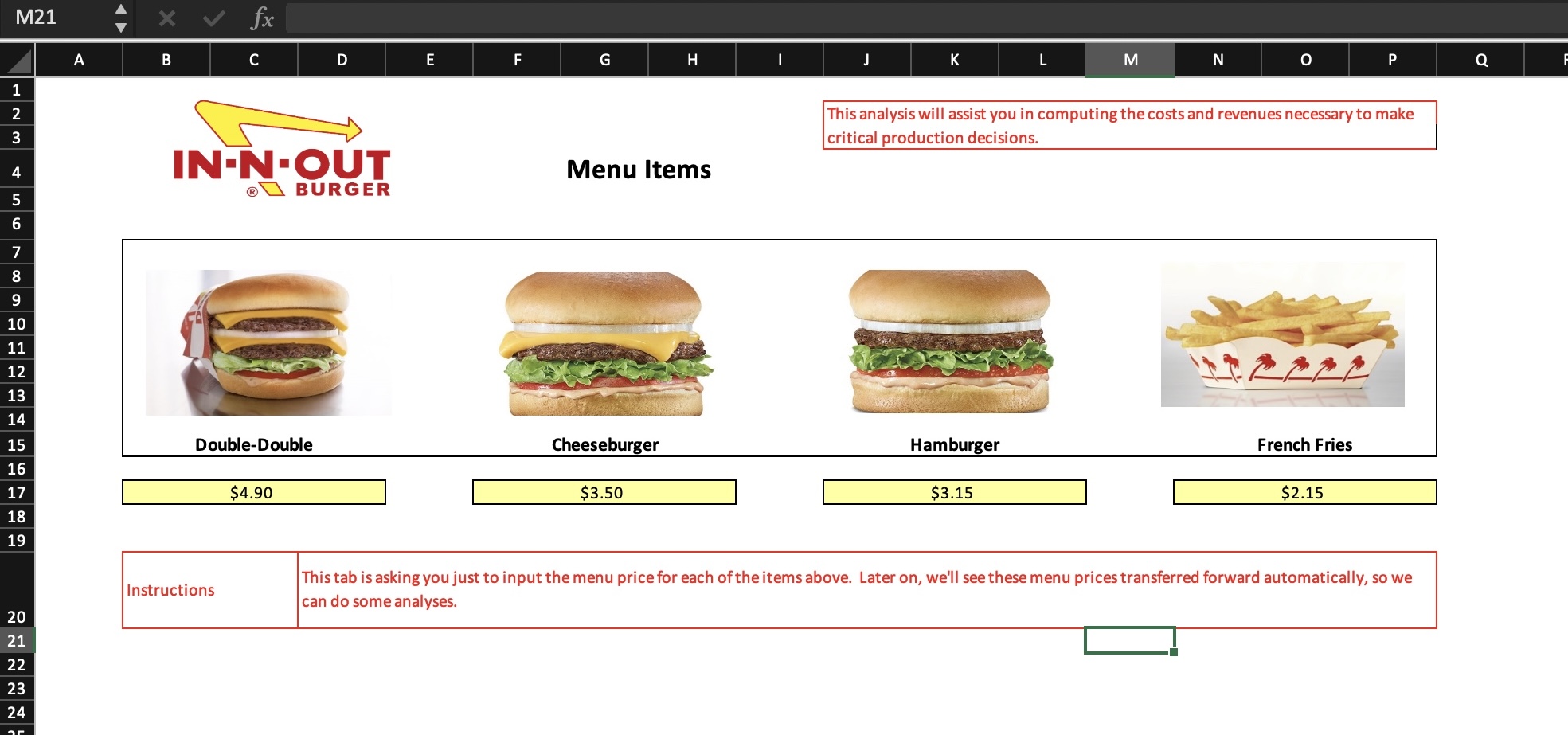
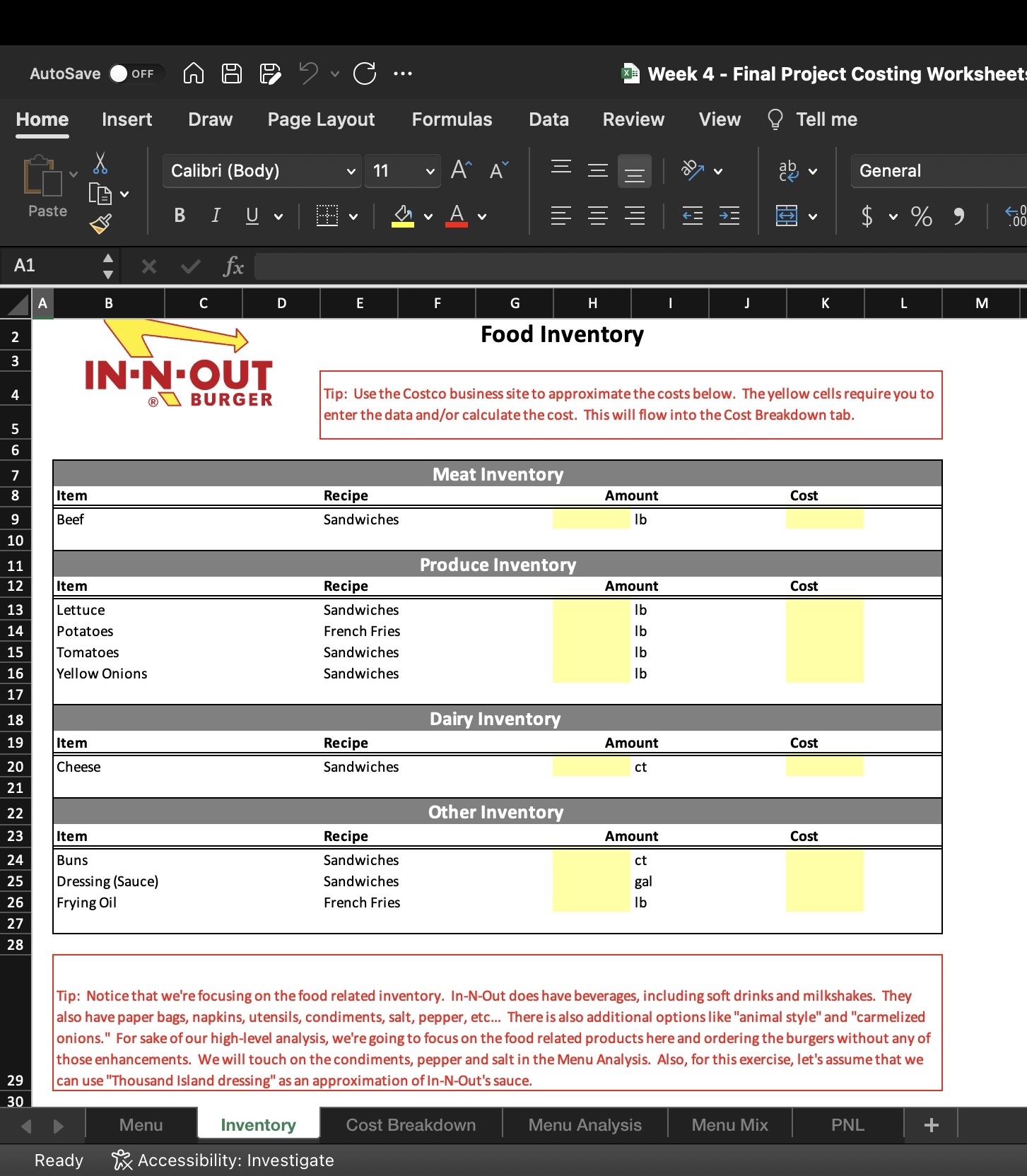
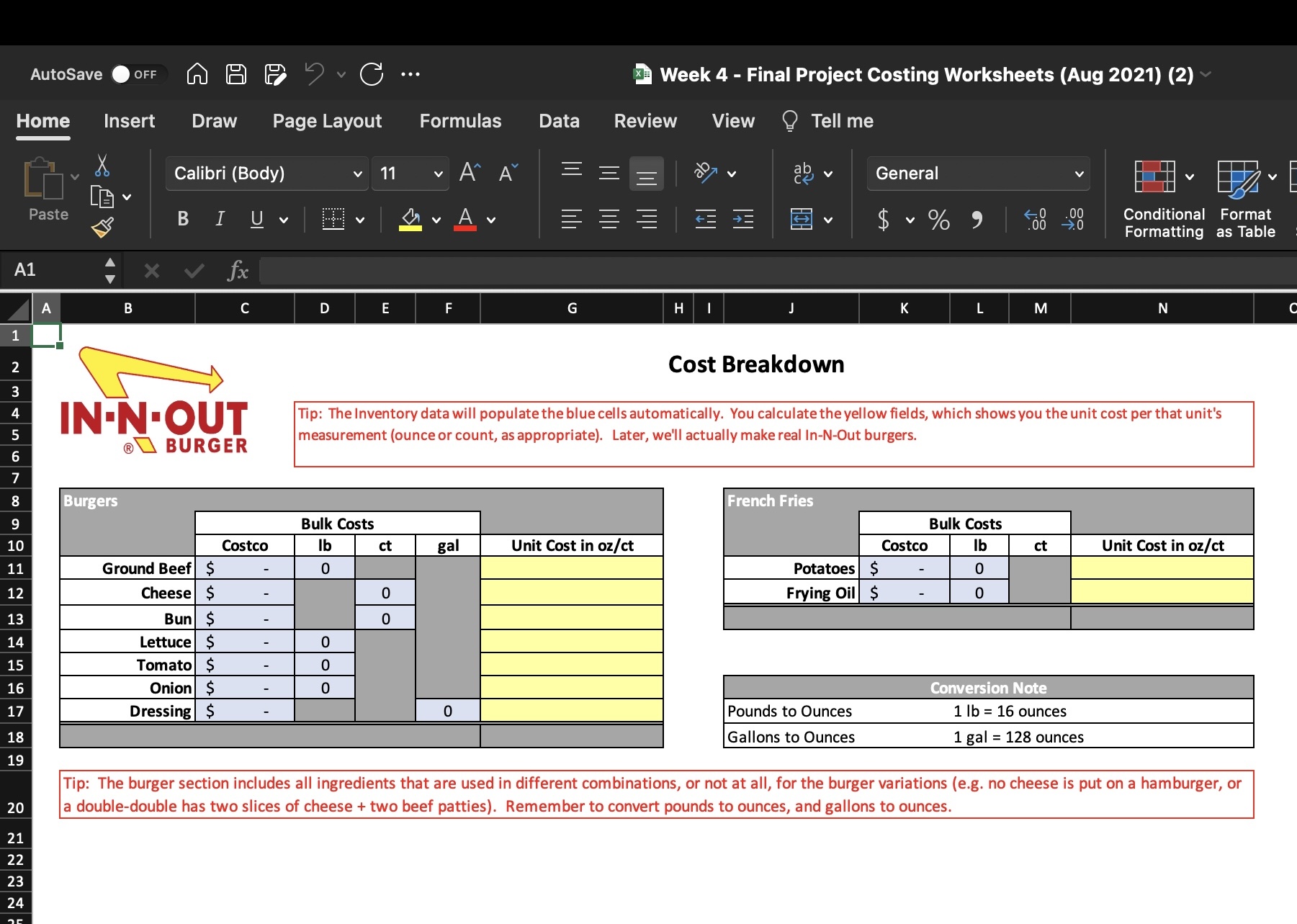
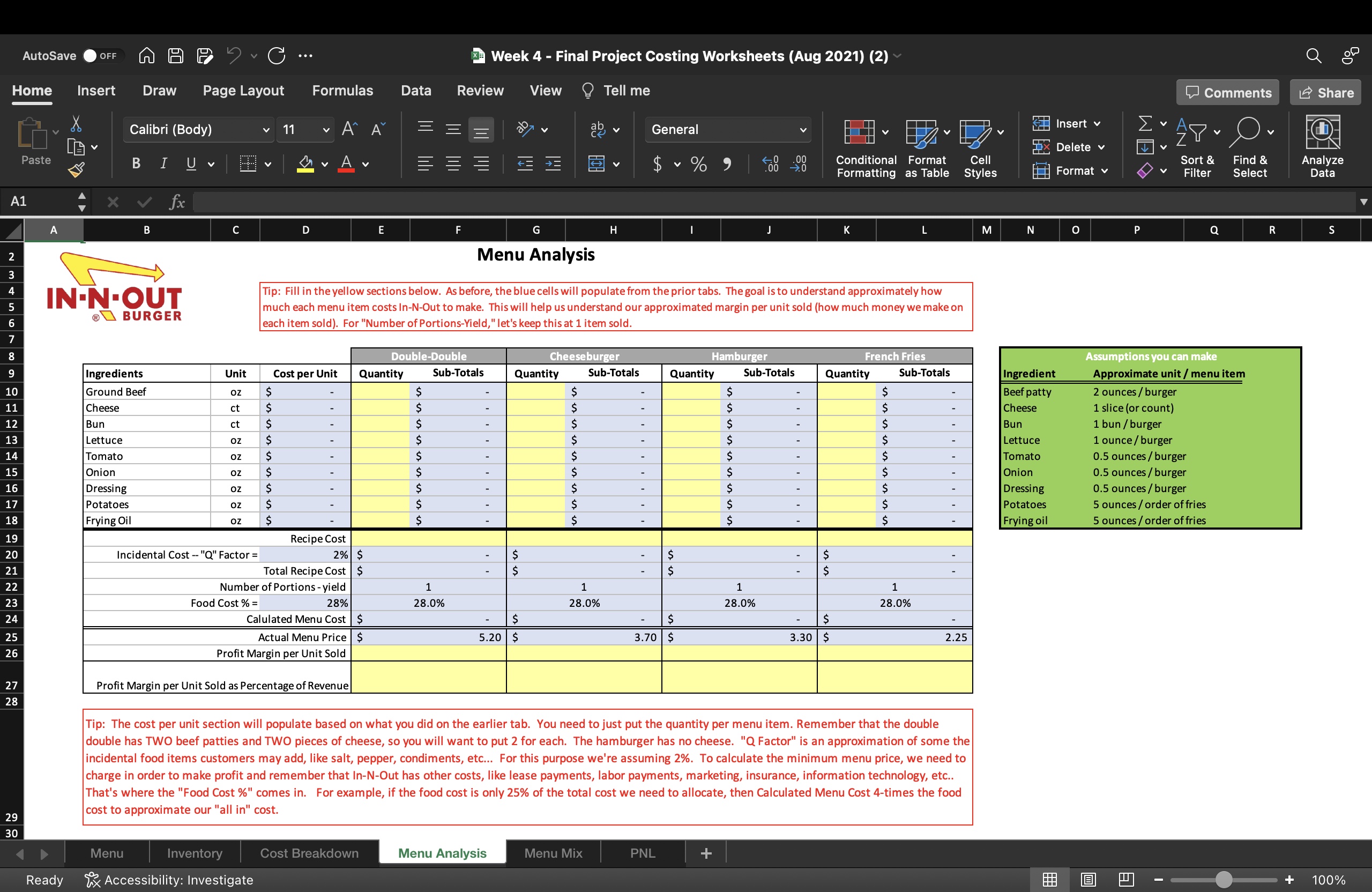
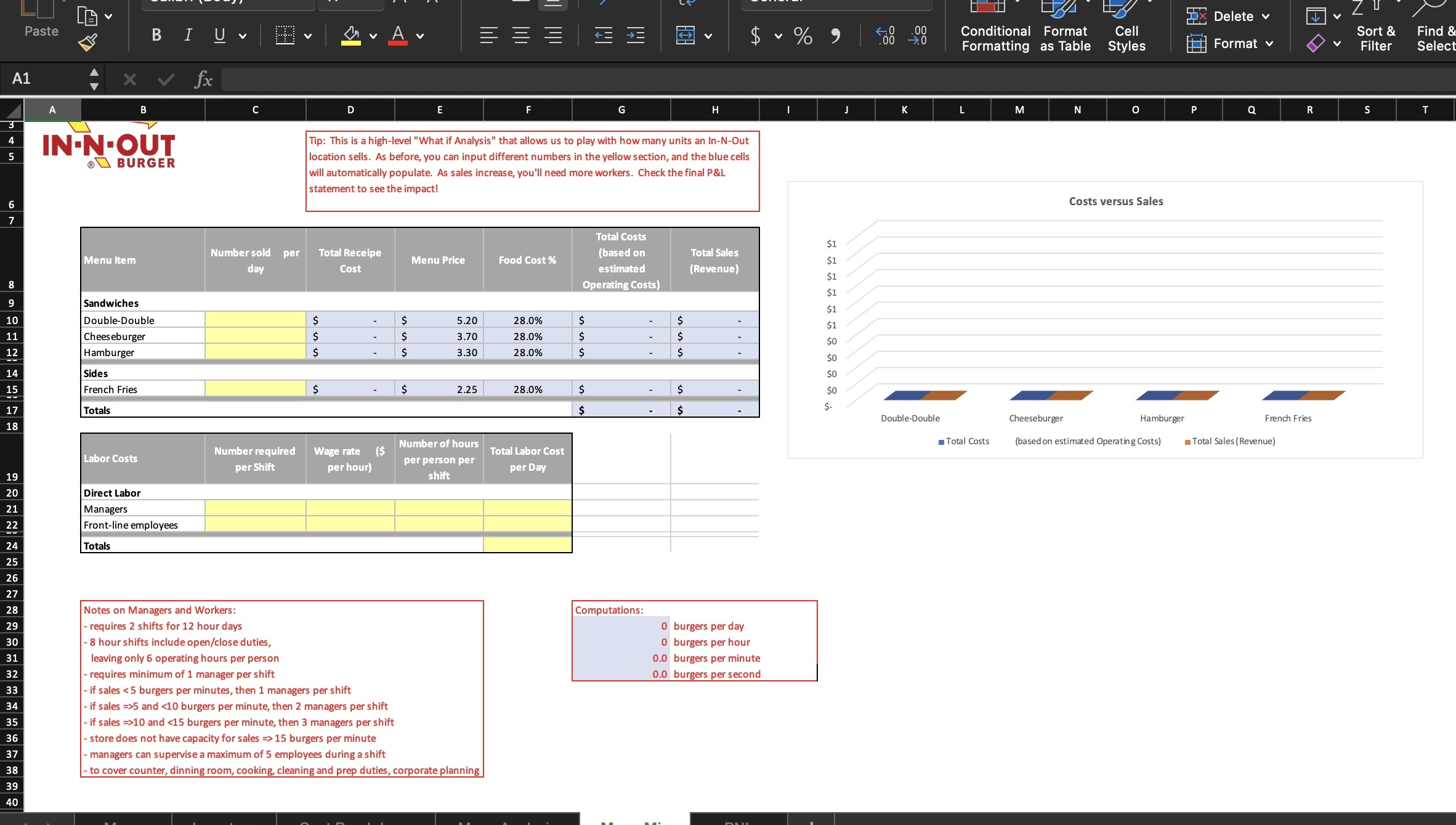
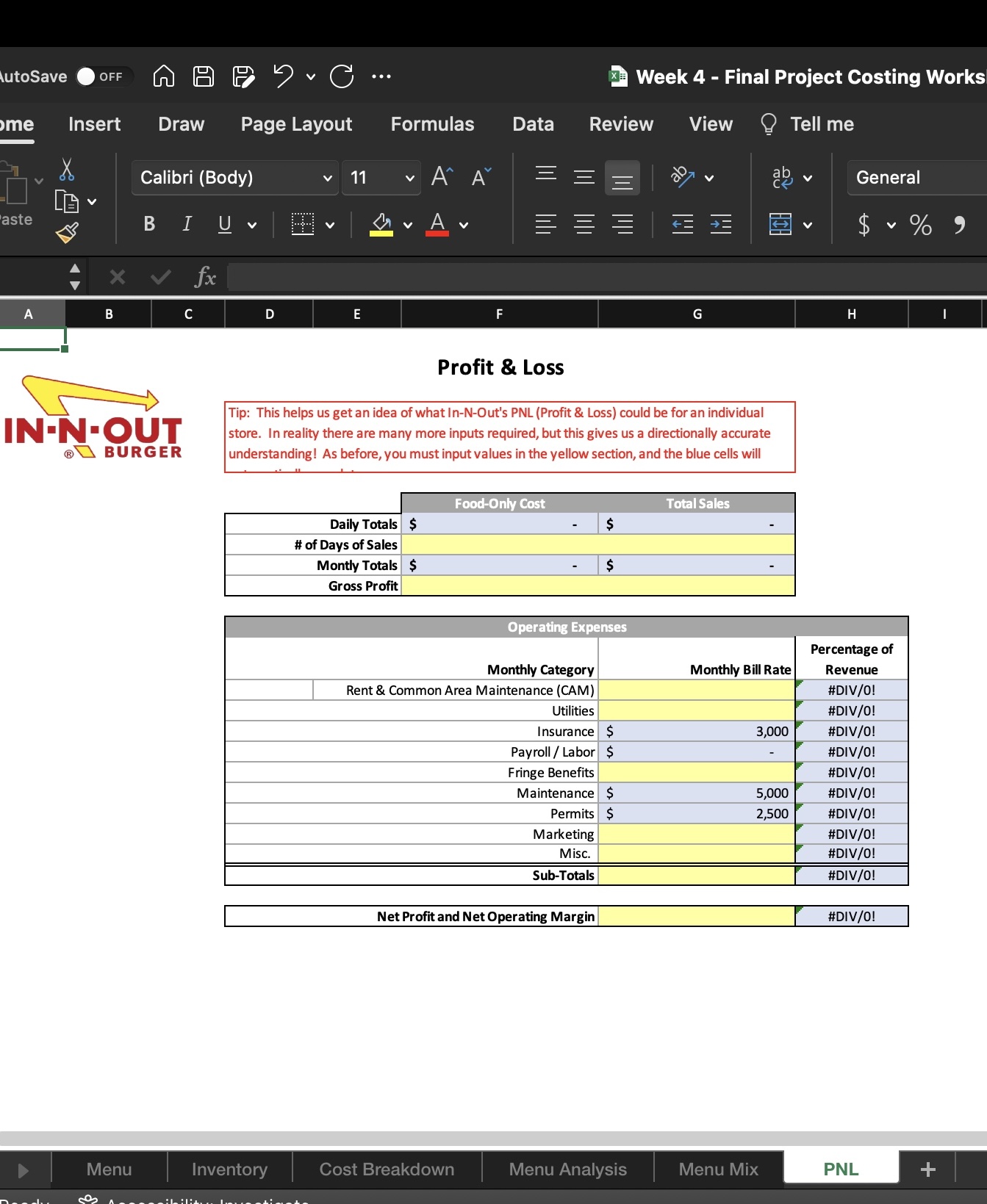 BURGER Tip: Use the Costco business site to approximate the costs below. The yellow cells require you to enter the data and/or calculate the cost. This will flow into the Cost Breakdown tab. Tip: Notice that we're focusing on the food related inventory. In-N-Out does have beverages, including soft drinks and milkshakes. They also have paper bags, napkins, utensils, condiments, salt, pepper, etc... There is also additional options like "animal style" and "carmelized onions." For sake of our high-level analysis, we're going to focus on the food related products here and ordering the burgers without any of those enhancements. We will touch on the condiments, pepper and salt in the Menu Analysis. Also, for this exercise, let's assume that we can use "Thousand Island dressing" as an approximation of In-N-Out's sauce. Cost Breakdown IN-OUT Tip: The Inventory data will populate the blue cells automatically. You calculate the yellow fields, which shows you the unit cost per that unit's measurement (ounce or count, as appropriate). Later, we'll actually make real In-N-Out burgers. Tip: The burger section includes all ingredients that are used in different combinations, or not at all, for the burger variations (e.g. no cheese is put on a hamburger, or a double-double has two slices of cheese + two beef patties). Remember to convert pounds to ounces, and gallons to ounces. D-OUT Tip: Fill in the yellow sections below. As before, the blue cells will populate from the prior tabs. The goal is to understand approximately how much each menu item costs In-N-Out to make. This will help us understand our approximated margin per unit sold (how much money we make on each item sold). For "Number of Portions-Yield," let's keep this at 1 item sold. Tip: The cost per unit section will populate based on what you did on the earlier tab. You need to just put the quantity per menu item. Remember that the double double has TWO beef patties and TWO pieces of cheese, so you will want to put 2 for each. The hamburger has no cheese. "Q Factor" is an approximation of some the incidental food items customers may add, like salt, pepper, condiments, etc... For this purpose we're assuming 2%. To calculate the minimum menu price, we need to charge in order to make profit and remember that In-N-Out has other costs, like lease payments, labor payments, marketing, insurance, information technology, etc.. That's where the "Food Cost \%" comes in. For example, if the food cost is only 25% of the total cost we need to allocate, then Calculated Menu Cost 4-times the food cost to approximate our "all in" cost. N-OUT Tip: This is a high-level "What if Analysis" that allows us to play with how many units an In-N-Out location sells. As before, you can input different numbers in the yellow section, and the blue cells will automatically populate. As sales increase, you'll need more workers. Check the final P\&L statement to see the impact! Notes on Managers and Workers: - requires 2 shifts for 12 hour days - 8 hour shifts include open/close duties, leaving only 6 operating hours per person - requires minimum of 1 manager per shift - if sales
BURGER Tip: Use the Costco business site to approximate the costs below. The yellow cells require you to enter the data and/or calculate the cost. This will flow into the Cost Breakdown tab. Tip: Notice that we're focusing on the food related inventory. In-N-Out does have beverages, including soft drinks and milkshakes. They also have paper bags, napkins, utensils, condiments, salt, pepper, etc... There is also additional options like "animal style" and "carmelized onions." For sake of our high-level analysis, we're going to focus on the food related products here and ordering the burgers without any of those enhancements. We will touch on the condiments, pepper and salt in the Menu Analysis. Also, for this exercise, let's assume that we can use "Thousand Island dressing" as an approximation of In-N-Out's sauce. Cost Breakdown IN-OUT Tip: The Inventory data will populate the blue cells automatically. You calculate the yellow fields, which shows you the unit cost per that unit's measurement (ounce or count, as appropriate). Later, we'll actually make real In-N-Out burgers. Tip: The burger section includes all ingredients that are used in different combinations, or not at all, for the burger variations (e.g. no cheese is put on a hamburger, or a double-double has two slices of cheese + two beef patties). Remember to convert pounds to ounces, and gallons to ounces. D-OUT Tip: Fill in the yellow sections below. As before, the blue cells will populate from the prior tabs. The goal is to understand approximately how much each menu item costs In-N-Out to make. This will help us understand our approximated margin per unit sold (how much money we make on each item sold). For "Number of Portions-Yield," let's keep this at 1 item sold. Tip: The cost per unit section will populate based on what you did on the earlier tab. You need to just put the quantity per menu item. Remember that the double double has TWO beef patties and TWO pieces of cheese, so you will want to put 2 for each. The hamburger has no cheese. "Q Factor" is an approximation of some the incidental food items customers may add, like salt, pepper, condiments, etc... For this purpose we're assuming 2%. To calculate the minimum menu price, we need to charge in order to make profit and remember that In-N-Out has other costs, like lease payments, labor payments, marketing, insurance, information technology, etc.. That's where the "Food Cost \%" comes in. For example, if the food cost is only 25% of the total cost we need to allocate, then Calculated Menu Cost 4-times the food cost to approximate our "all in" cost. N-OUT Tip: This is a high-level "What if Analysis" that allows us to play with how many units an In-N-Out location sells. As before, you can input different numbers in the yellow section, and the blue cells will automatically populate. As sales increase, you'll need more workers. Check the final P\&L statement to see the impact! Notes on Managers and Workers: - requires 2 shifts for 12 hour days - 8 hour shifts include open/close duties, leaving only 6 operating hours per person - requires minimum of 1 manager per shift - if sales Step by Step Solution
There are 3 Steps involved in it
Step: 1

Get Instant Access to Expert-Tailored Solutions
See step-by-step solutions with expert insights and AI powered tools for academic success
Step: 2

Step: 3

Ace Your Homework with AI
Get the answers you need in no time with our AI-driven, step-by-step assistance
Get Started


